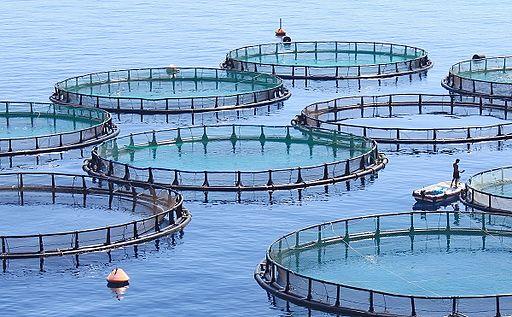Industrial farming provides much of our food. The ability to provide the world with adequate food sources, including sustainable industrial agriculture, is a foundational interest of ACSH. [1]
In the face of concerns about global food insecurity and increasing demand for animal protein, the efficiency of animal sources of protein has been questioned. Traditionally feed conversion ratios have been used as the metric of efficiency, but a new paper in Environmental Research Letters examines whether other parameters are better measures.
Eating plants is the most efficient way for humans to get their nutrients, calories, and proteins. But a wholly plant-based diet may have deficiencies. For a large and growing portion of the planet, there is nothing better than a steak, a chicken cutlet, or a piece of salmon. Animals provide a concentrated source of calories, protein, and micronutrients.
But for us to eat these foods, we must provide food to the cows, chickens, and salmon. Farming, industrial, organic or even a family farm needs to show a profit (or at least break even). Feed conversions ratios (FCR) measure the amount of food we feed an animal compared to the weight of the animal when slaughtered. Typical values for beef cattle range from 6-10 (each pound of beef on the hoof requiring 6-10 pounds of feed) and 1.7-2 for chicken. Farmed fish and prawns are in the same, as efficient as chicken; this has helped aquaculture to provide 17% of global animal protein and for some countries almost 50% of their protein intake.
FCR is relatively straightforward measure, food in and the weight of the animal at slaughter, but it fails to take into account what may be inedible (like hooves, although some people do eat chicken feet) and the nutritional components and quality we get out. The study suggests we use another measure, the efficiency of an animal in converting nutrients in their food into nutrients for our food supply, specifically calorie and protein retention. [2] The researchers collected the necessary data for their recalculation, specifically for intensive, commercial operations – industrial farming. Here is what they found
- Aquatic and terrestrial species provide similar protein and calorie retention.
- Aquaculture's protein retention ranges from 14-28% (13-37% for livestock).
- Aquaculture's calorie retention ranges from 6-25% (7-27% for livestock).
- Chicken and salmon were the animals with the highest protein and calorie retention. (Evidently, it is salmon, not tuna that is the chicken of the sea)
The findings that the values of most fish [3] were comparable to the food value of pigs and cattle and not the chicken is quite different than simple feed conversion ratios have suggested. Aquaculture may be helpful, but it is not necessarily the bargain we think. As usual, the situation is more complicated than we initially thought.
The authors end with a very lucid conclusion.
"Our results reveal a different ranking in terms of efficiency of farmed animal species when measured by FCR versus protein and calorie retention. We do not argue, however, that retention measures should replace FCR as the major indicator of feed efficiency. Instead, the best path forward is to use multiple measures to compare efficiency of various types of food production, including animals and plants. Discussions of sustainable food systems should be informed by a combination of factors including FCRs and nutrient retention, and also environmental footprint measures including resource use (e.g., land, water, fertilizer), greenhouse gas emissions, and negative externalities including biodiversity loss and water pollution."
[1] Dr. Norman Borlaug, Nobel laureate and father of the Green Revolution was a founder of ACSH.
[2] Protein retention = gm of protein in edible portion/gm of protein in feed; Calorie retention = calories inedible portion/calories in feed.
[3] Tiger prawns, common and grass carp, pangas and channel catfish, tilapia, whiteleg shrimp, rainbow trout and Atlantic salmon were included in the analysis.
Source: Feed conversion efficiency in aquaculture: do we measure it correctly? Environmental Research Letters DOI: 10.1088/1748-9326/aaa273




